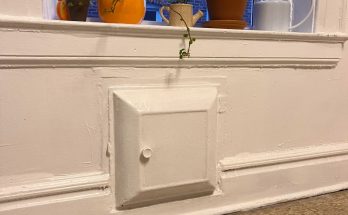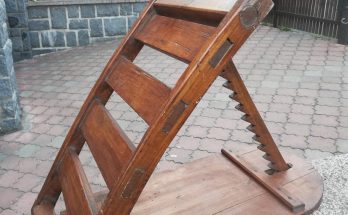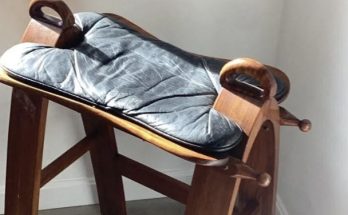
And so there I was, lying on a hotel room bed, a new member of the hollow clatter of travelers who merely endure (you do this when you’re too tired to sleep, and too shattered to find comfort in a nap). That was when I noticed them: a grid of small, wooden discs, affixed to the ceiling as if some tool-happy carpenter had shown up one day, started a job and then never come back. Weird right? These wood disks in the ceiling seemed oddly purposeful.
I even assumed it was some sort of strange, audio rig or the remaining corpse of some chandelier graveyard. Nope. I’ve seen this before, and so, if you live in, or ever visit, old houses (or creepy hotels), have you.
I will tell you what those little guys are for, and why anyone interested in spectacle design (or having routines involving props a guest may or may not want to engage with until that person has had enough of a drink or eight) should be a bit more enthusiastic about them.
Old Plaster, Say Hi to Gravity (guess who wins)
Okay, brief history lesson. Once upon a time, before drywall launched a wall revolution around the globe, walls and ceilings were lath and plaster. Essentially, he’d tack rows of thin wooden slats (lath) to the wall, and then cover it with wet plaster, which would seep through and harden. It could, it’s clean, and man was it high-maintenance, far more than I had anticipated.
Fast-forward 80, 90, 100 years, and yeah, things begin to give way.
Plaster hunts for moisture elsewhere; the fish maw dries, cracks and begins to pull away from the lath beneath. The ceiling is, um, up there, and because gravity doesn’t take a nap, that plaster is sagging like a weary hammock. Sometimes, big pieces fall down. Don’t ask me how I know (RIP lamp I didn’t even really like).
So… What’s the Deal with the Wood Disks on the Ceiling?
So here’s the deal, and it’s not exactly a can’t-beat-the-positiveness idea. You can’t screw the plaster back up. It’s brittle. You’re only going to make a bad situation even worse.
But to put onto a little wooden disk—we’ll suppose about the size of a silver dollar—and then screw through that into the lath?” Voila, you’ve made this big washer to spread out the force. The disk drags the plaster in, rather than smashes it in. It’s like giving your ceiling a big warm hug.
Some people like fancy metal plaster washers (yes, they exist). But for the DIYer or old-school home repairer (note: not to be confused with DIY help sites.) you’ve that (way) less expensive choice with none of the grits or sandpaper glue: wood disks in a sack-wood disks. They’re inexpensive, easy to create, and surprisingly effective. Functioning, as still holding up the ceiling after 20 years functioning.

I Have Done This – And It Works
Years ago when I lived in a shaky 1920s bungalow, I happened upon a sagging portion of ceiling in the dining room that, let’s face it, looked like it would take a contract out on me if it could. I wasn’t in the mood to rip the whole thing out, so I thought I’d give this a try.
I drilled some pilot holes and allscrewed the little wooden disks to the board. I spread them out relatively even, checkerboard style, then gently wedged the plaster back into place. And then you painted over them and — boom! — it looked fabulous. And it held, thanks to these wood disks embedded in the ceiling.
It’s not glamorous. It’s not high-tech. But it works. The fact it once held — and maybe is still holding, with a trace of conspiracy — might even give a skeptical reader the willies. And there’s something kind of good about that, you know?
Why You Might See Them in Just One Room
If you’re noticing these wood discs in just one room — as I did in that hotel — it likely means that room had worse sagging plaster than other spaces in the building. Or perhaps it was the only room that someone bothered to fix up. Or, the property’s plumbing from the upstairs leaked. Old buildings have their own stories, and the ceiling could reveal a thing or two with wood disks embedded.
Even if I have (or thought I had) the anticipation of normal returns, should I Go or Hedge?
Entirely up to you. Others choose to keep them on display — under-the-floor-style, especially in basements or workshops or vintage-y places. Others mud over them or sand everything smooth and flat and then repaint. (But once covered up, you wouldn’t even know they were there.)
But I kind of like it when I see them.” A DIY patch has a kind of quirk. It says, “Yo, somebody was working on this place.” And that matters, especially in a throwaway-everything world.
The Bottom Line
If your ceiling is staring down at you with wooden discs, don’t panic. They’re not some creepy spy network (or are they … only kidding! Probably.) These patches are pretty much just a good old fashioned fix for sagging plaster — a bow to all the people who came before us who went ahead and patched, but didn’t tear off the face of things by simply using wood disks in the ceiling.
Honestly? I love that. It’s one of those tiny things that reminds me: The good old days weren’t exactly pretty — but people knew how to run things.



